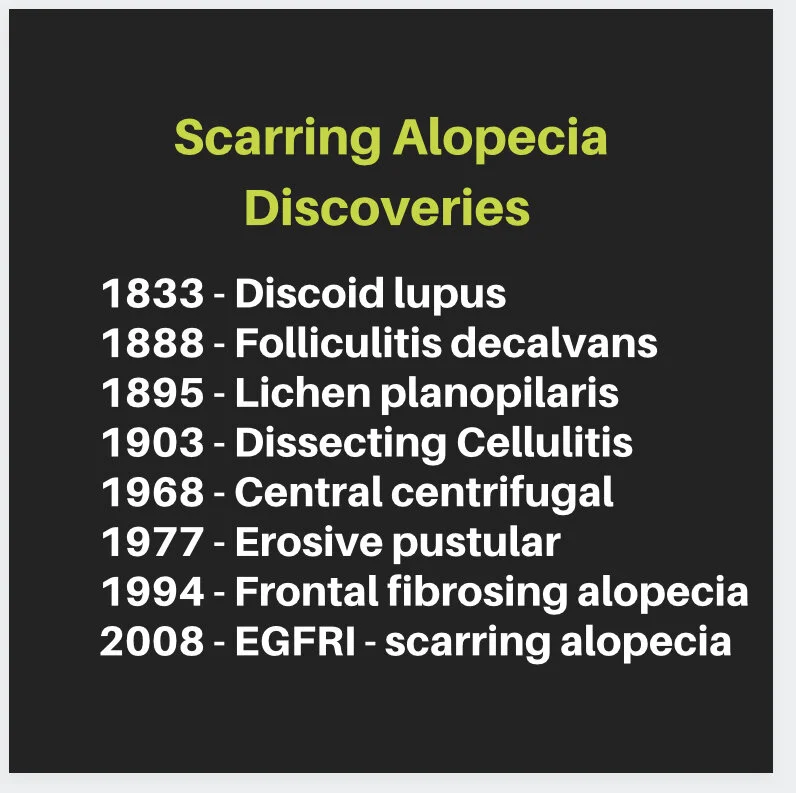National Scarring Alopecia Awareness Month (Day 10, Fact 10): Many Scarring Alopecias Are Fairly New
Scarring Alopecias are Fairly New Among Humans: Every Few Decades a New Type is Discovered.
We know that hair loss has been documented for a few thousand years. Ancient writings frequently document hair loss. Surprisingly, even though mankind has documented medical findings for a long time, “scarring alopecia” has only recently been described.
Whether the conditions are truly new or simply were not described will need to be left to historians but most likely a great majority of scarring alopecias are truly new.
Frontal fibrosing alopecia for example was just described in 1994. If it was prevalent in the 3000 years before that, it’s almost certain someone would be taken note.
The table here shows the evolution of how scarring alopecias came to be described. Every decade or two a new entity gets added. What this table reminds us is that environmental factors are likely to have a good deal of relevance as risk factors for many scarring alopecias given how recently these conditions have been identified in humans. The things we do, the things we eat, the world we live in, the places we live, the stress we feel, the pollution we breathe, the medications we take, the hair care practices we adopt, the sleep we get, the connections we have - all have the potential to affect the the development of scarring alopecia in some way. Genetic factors are also likely relevant to alter the underlying predisposition that a patient has to develop the scarring alopecia but environmental factors may explain the rise in cases over the past 100 years.
More study is needed .... and underway. What will be the next type of scarring alopecia to be identified in humans?
REFERENCES
Burton JL. Case for Diagnosis. Pustular dermatosis of scalp. Br J Dermatol 1977 Jul; 97 (Supp 15): 67-9
Cazenave PLA, Schedel HE. Manual of the diseases of the skin. London: Henry Renshaw; 1852. (translated with notes and additions by Burgess).
Donovan JC et al. Scarring alopecia associated with use of the epidermal growth factor inhibitor gefitinib. Arch Dermatol 2008; 144:1524-25
Kossard S. Postmenopausal frontal fibrosing alopecia. Scarring alopecia in a pattern distribution. Arch Dermatol 1994; 130: 770-774
LoPresti P eet al. Hot comb alopecia. Arch Dermatol 1968; 98(3) 234-238.
Pringle JJ. Cited by Adamson HG. Lichen pilaris spinolosus. Br J Dermatol 1905; 17:78-79
Spitzer L. Dermatitis follicular et perifollicularis conglobata. Dermatol Zeitschrift (Berlin). 1903. 10:109-20
This article was written by Dr. Jeff Donovan, a Canadian and US board certified dermatologist specializing exclusively in hair loss.

